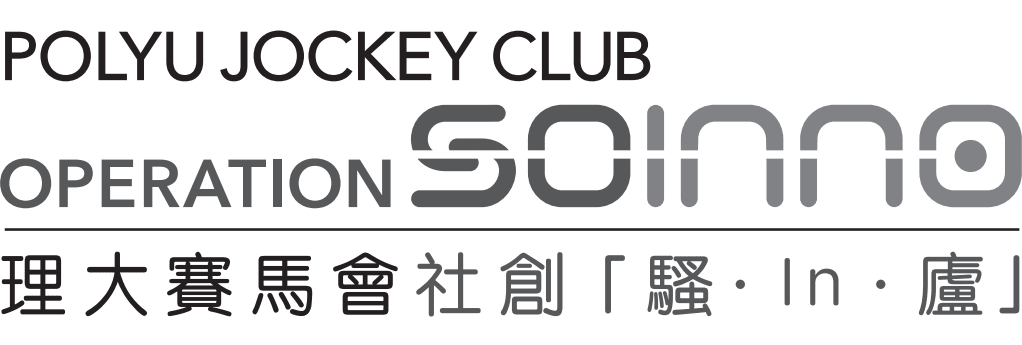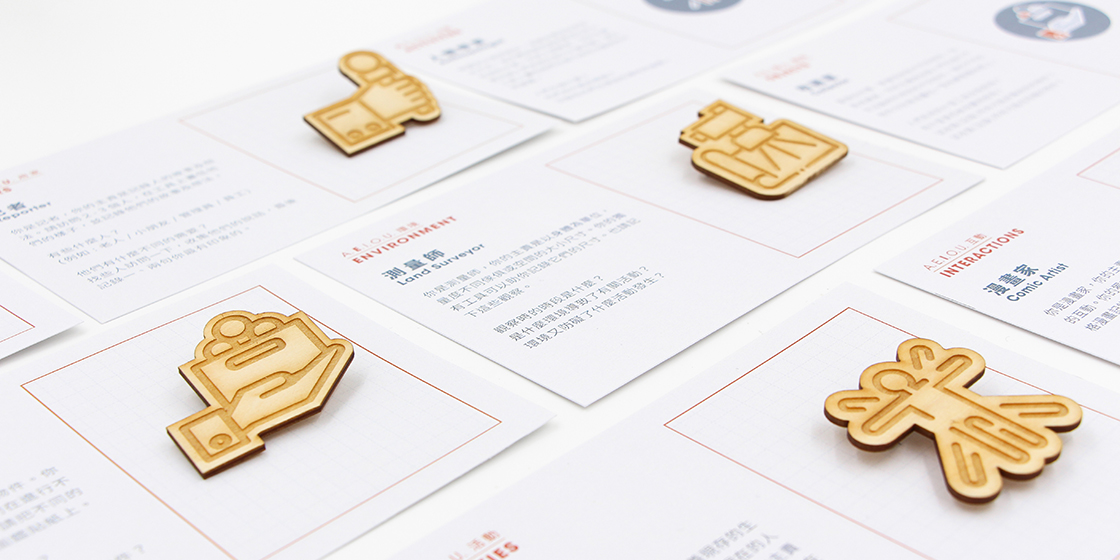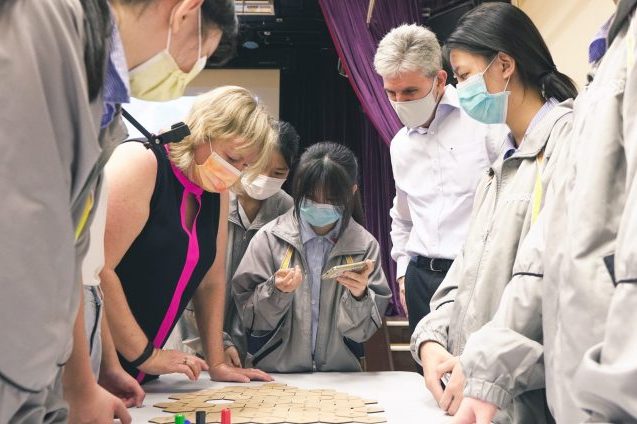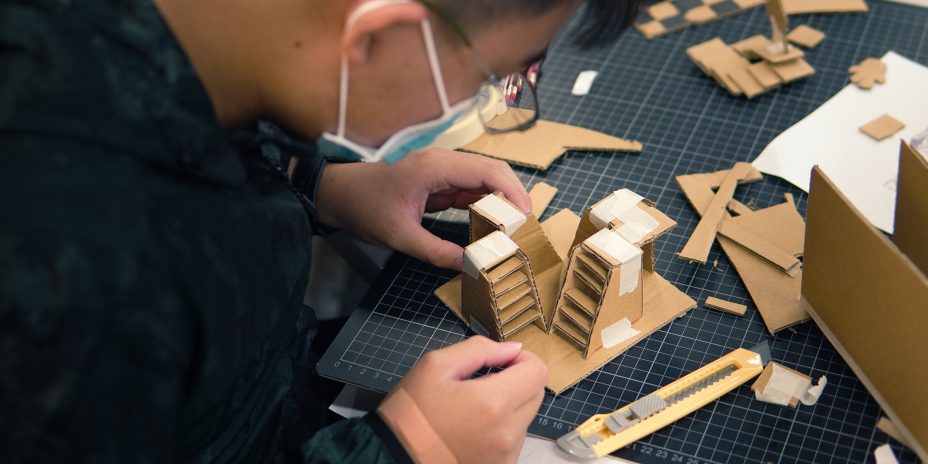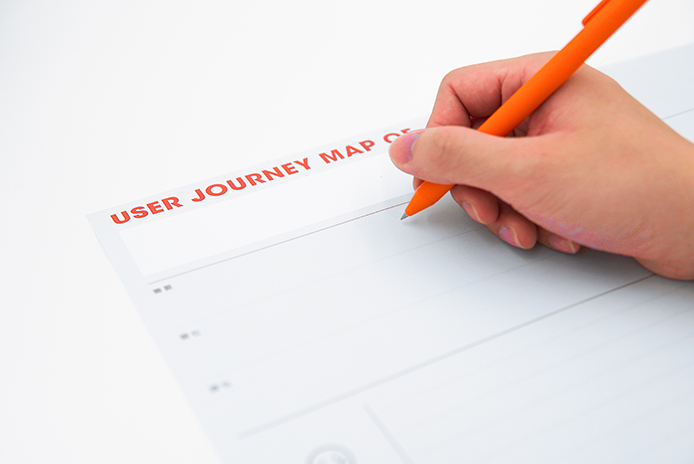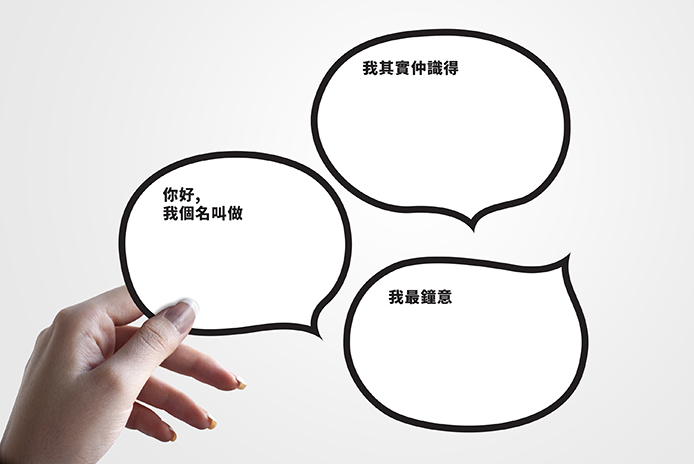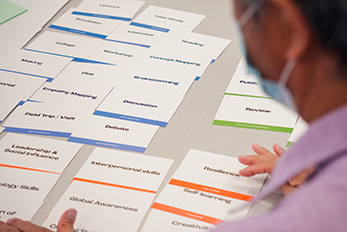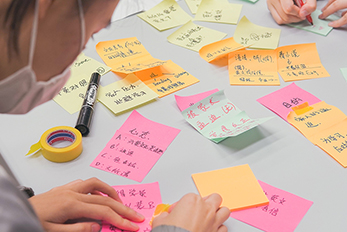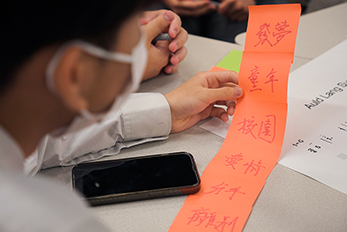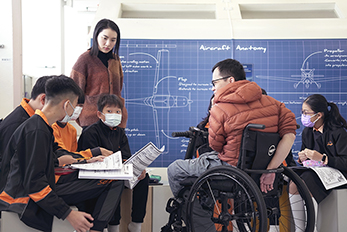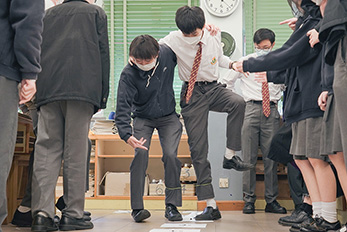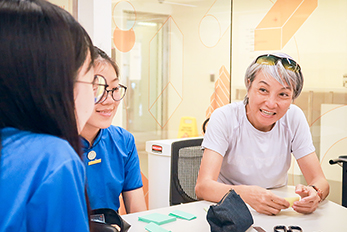WHAT is it?
Observation is a quintessential skill for a designer. Students can learn how to make sense of and gain insights from a chaotic and complex field.
WHY use it?
Students become familiar with various methods of observation. They also acquire the ability to abstract insights from real life situations, and learn how to categorise these insights in a meaningful way.
HOW to do it?
▸ Photo-taking briefing
Before going out, show some examples of the types of photos that students need to take according to the chosen framework, and set a minimum number of photos that each student must take.
Unlike traditional analysis of photos gathered from observation, which tends to view a single photo capturing different points of interest, encourage students to have one point of interest in each photo. This is very important for later sorting. Remind them to zoom their photos accordingly.
▸ Observation
Choose one of the suggested frameworks and ask the students to organise their thoughts accordingly.
You can also choose to ask the students to use two different frameworks to observe the same site (but avoid using AEIOU and POEMS at the same time).
AEIOU
AEIOU is a framework to help interpret observations and to attend to, document and code data under the guiding taxonomy of Activities, Environments, Interactions, Objects and Users.
- Activities are goal-directed sets of actions – paths towards things people want to accomplish. What are the modes people work in and the specific activities and processes they go through?
- Environments include the entire arena where activities take place. What is the character and function of the space overall, of each individual’s spaces and of shared spaces?
- Interactions are between a person and someone or something else; they are the building blocks of activities. What is the nature of routine and special interactions between people, between people and objects in their environment and across distance?
- Objects are key elements sometimes put to complex or unintended uses (changing their function). What are the objects and devices people have in their environments and how do they relate to their activities?
- Users are the people whose behaviours, preferences and needs are being observed. Who is there? What are their roles and relationships? What are their values and prejudices?
Observation tools
Included are a set of tools for the division of labour and for helping students record their observations more concretely. Every student is assigned a role with an accompanying recording tool. Students are assigned roles at random by drawing a sealed envelope. Inside each envelope is a card with a short descriptions of the role and the guiding questions for observation. There are also pins for them to wear when performing their roles.
Anthropologist (activities)
There are 3 sets of ‘Draw the gestures’ record sheets for students playing the anthropologist role to record people’s gestures while they are engaging in various activities. The 3 sets are ‘Sit, ‘Lie’ and ‘Stand’; students can make use of the skeleton templates as a guide for their own drawings.
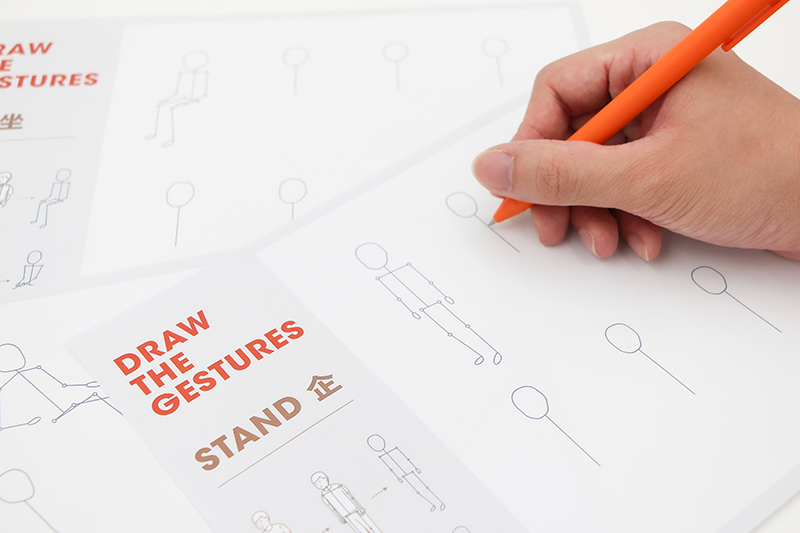
Land surveyor (environments)
Students playing the land surveyor role are encouraged to use their own body as measuring units (e.g., feet, arms) and record measurements on the supplied graph paper. With the help of measuring tapes, the grids on the graph papers help students draw to scale.
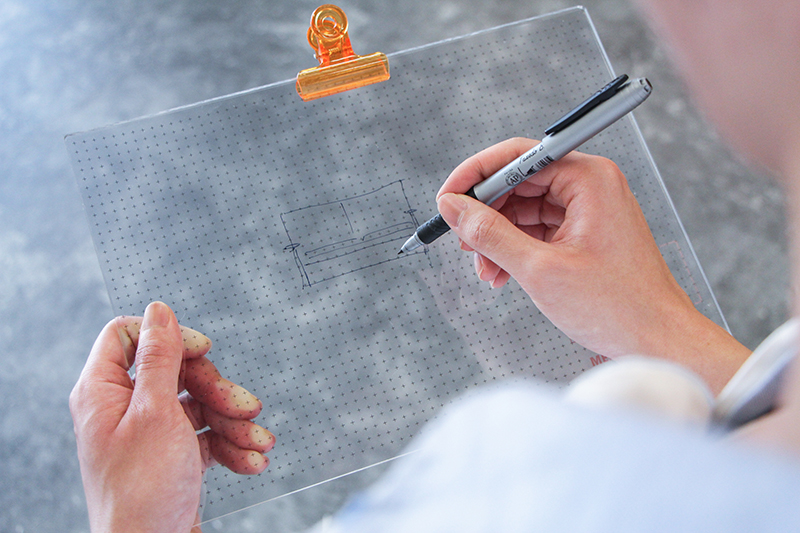
Comic artist (interactions)
The comic drawing tools help students playing the comic artist role draw interactions as they unfold in time. Students can hang the tool around their neck and then draw on the paper rolls to record the ‘frames’ of the continuous moments of different interactions. The finished comic strip can be tore off using the edge at the end of the tool.
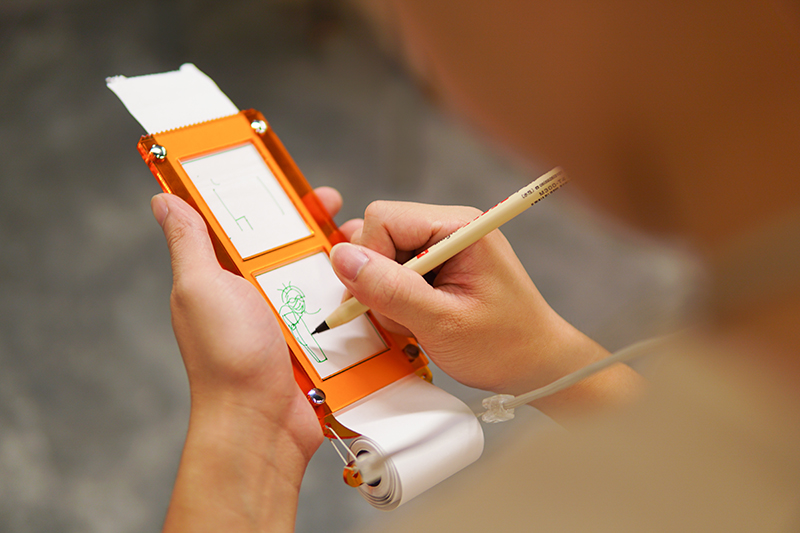
Collector (objects)
The object collector tool is designed to help students playing the collector role identify the different artefacts that are being used at the scene. Students can hang the tool around their neck and draw the relevant objects on the orange dot stickers. The collected items are discussed and selected at a later stage of the design process.
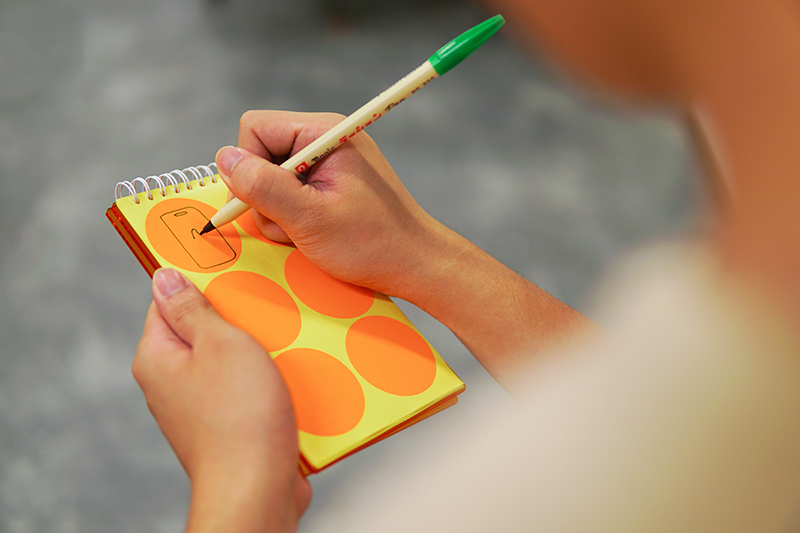
Reporter (users)
Students with the reporter role are responsible for interviewing people and gathering their thoughts on issues. The transparent part of the people profile card can be used to draw the face of the people who are interviewed. It is also very important to obtain 1 or 2 quotations from the interviewees.
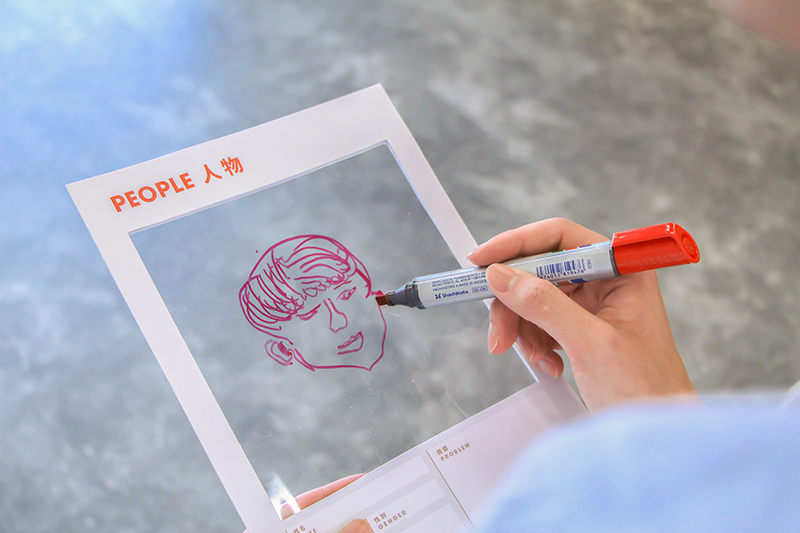
▸ Inventory
This is a method for gathering information visually. Facilitators should prepare a street map or another visual frame and ask students to count and record information about 1 or 2 items on the map.
▸ POEMS
POEMS stands for People, Objects, Environments, Messages and Services. It is a framework similar to AEIOU but with a different taxonomy that guides the observer to view the site as different (service) systems of exchange.
- People are those whose behaviour, preferences and needs are being observed. Who is there? What are their roles and relationships? What are their values and prejudices?
- Objects are key elements sometimes put to complex or unintended uses (changing their function).
What are the objects and devices people have in their environments and how do they relate to their activities? - Environments include the entire arena where activities take place. What is the character and function of the space overall, of each individual’s spaces and of shared spaces?
- Messages The tone of the language or commonly used phrases in tag lines, social/professional interactions and/or environmental messages.
- Services All of the services, apps, tools and frameworks used.
▸ Presentation and debriefing
If possible, return to the school for debriefing, and ask the students for their immediate insights. Ensure that the logistics, such as developing and printing photos, are catered for.
